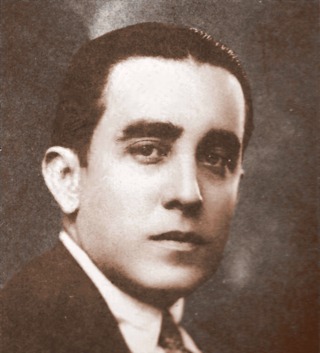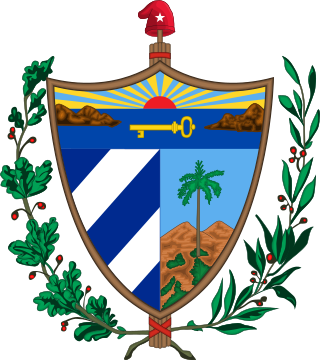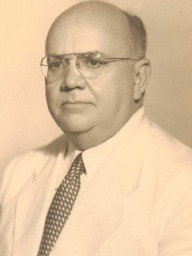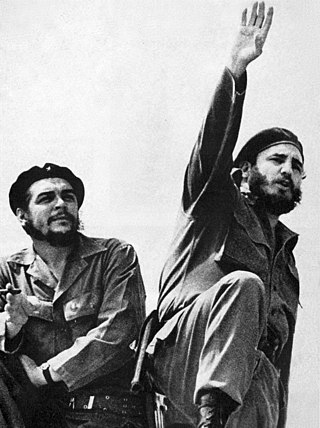
Ruben Fulgencio Batista y Zaldívar was a Cuban military officer and politician who was the elected president of Cuba from 1940 to 1944 and as a military dictator from 1952 until his overthrow in the Cuban Revolution in 1959.

The Cuban Revolution was the military and political overthrow of Fulgencio Batista's dictatorship, which had reigned as the government of Cuba between 1952 and 1959. The revolution began after the 1952 Cuban coup d'état, which saw Batista topple the nascent Cuban democracy and consolidate power. Among those opposing the coup was Fidel Castro, then a novice attorney who attempted to contest the coup through Cuba's judiciary. Once these efforts proved fruitless, Fidel Castro and his brother Raúl led an armed attack on the Cuban military's Moncada Barracks on 26 July 1953.

Gerardo Machado y Morales was a general of the Cuban War of Independence and President of Cuba from 1925 to 1933.
This article gives an overview of liberalism in Cuba. It is limited to liberal parties with substantial support, mainly proved by having had a representation in parliament. The sign ⇒ means a reference to another party in that scheme. For inclusion in this scheme it isn't necessary so that parties labeled themselves as a liberal party.

Julio Antonio Mella McPartland was a Cuban political activist, journalist, communist revolutionary, and one of the founders of the original Communist Party of Cuba. Mella studied law at the University of Havana but was expelled in 1925. He had worked against the government of Gerardo Machado, which had grown increasingly repressive. Mella left the country, reaching Central America. He traveled north to Mexico City, where he worked with other exiled dissidents and communist sympathizers against the Machado government. He was assassinated in 1929, but historians still disagree on which parties were responsible for his death. The 21st century Cuban government regards Mella as a communist hero and martyr.

Ramón Grau San Martín was a Cuban physician who served as President of Cuba from 1933 to 1934 and from 1944 to 1948. He was the last president born during Spanish rule. He is sometimes called Raymond Grau San Martin in English.

The Cuban Revolutionary Party – Authentic, commonly called the Authentic Party, was a political party in Cuba most active between 1934 and 1952. Although the Partido Auténtico had significant influence, it eventually became unpopular due to corruption scandals and, despite significant reforms, Fulgencio Batista returned to power after a coup d’etat.

Miguel Mariano Gómez y Arias was a Cuban politician who served as the seventh President of Cuba for just over eight months in 1936. Compared to other administrations, there was general peace and tranquillity in Cuba during Gómez's brief presidency. It is claimed that he was a talented orator and writer, and the opposite of the typical "man on a horseback" attributed to previous Cuban Presidents with military backgrounds.
Fabio Grobart was a Marxist-Leninist revolutionary and politician who played an important role in the 1959 Cuban Revolution that overthrew Fulgencio Batista and led to Fidel Castro's rise to power.

Colonel Juan Blas Hernández was a prominent figure in the 1933 revolt against Gerardo Machado. He led various successful campaigns against Machado's troops en route to Havana.

The 1940 Constitution of Cuba was implemented during the presidency of Fulgencio Batista on 10 October 1940. It was primarily influenced by the collectivist ideas that inspired the Cuban Revolution of 1933. Widely considered one of the most progressive constitutions at the time, it provided for land reform, public education, a minimum wage and other social programs. It had 286 articles in 19 sections.

Cuba has suffered from widespread and rampant corruption since the establishment of the Republic of Cuba in 1902. The book Corruption in Cuba states that public ownership resulted in "a lack of identifiable ownership and widespread misuse and theft of state resources... when given opportunity, few citizens hesitate to steal from the government." Furthermore, the complex relationship between governmental and economic institutions makes them especially "prone to corruption."

The University of Havana is a public university located in the Vedado district of Havana, the capital of Cuba. Founded on 5 January 1728, the university is the oldest in Cuba, and one of the first to be founded in the Americas. Originally a religious institution, today the university has 15 faculties (colleges) at its Havana campus and distance learning centers throughout Cuba.

The Republic of Cuba, covering the historical period in Cuban history between 1902 and 1959, was an island country comprised the island of Cuba, as well as Isla de la Juventud and several minor archipelagos. It was located where the northern Caribbean Sea, Gulf of Mexico, and Atlantic Ocean meet. The period began in 1902 following the end of its first U.S. military occupation years after Cuba declared independence in 1898 from the Spanish Empire. This era included various changing governments and US military occupations, and ended with the outbreak of the Cuban Revolution in 1959. During this period, the United States exerted great influence on Cuban politics, notably through the Platt Amendment.
The Directorio Estudiantil Universitario (DEU) was founded in 1927 by University of Havana students against the backdrop of a power grab by President Gerardo Machado consisting of constitutional reforms designed to prolong his presidential term by two years, and to promote his reelection to an additional term of six years. In the period between pushing for these reforms and their adoption by the corrupt Constitutional Assembly, a strong opposition composed chiefly of university students formed against this "Machadato".

The Cuban Revolution of 1933, also called the Sergeants' Revolt, was a coup d'etat that occurred in Cuba in September 1933. It began as a revolt of sergeants and enlisted men in the military, who soon allied with student activists in the Directorio Estudiantil Universitario.

The 1952 Cuban coup d'état took place in Cuba on March 10, 1952, when the Cuban Constitutional Army, led by Fulgencio Batista, intervened in the election that was scheduled to be held on 1 June 1952, staging a coup d'état and establishing a de facto military dictatorship in the country. The coup has been referred to as the Batistazo in Cuban political jargon.

Manuel Antonio Dorta-Duque was a Cuban politician, lawyer, writer, university professor, and signator of the 1940 Constitution of Cuba. He was National Chief of the Order of Knights of Columbus and Rector of the Pontifical Academy of Social Sciences in Havana. He was named Defender of the Catholic Faith in Cuba, and on July 27, 1950 Pope Pius XII granted him the Pro-Ecclesia et Pontiff distinction for his efforts. He was a benefactor and generous donor to the Catholic Church, and helped build the Iglesia Nuestra Señora de la Candelaria, dedicated to the Virgen from the Island of Tenerife, Canary Islands, where his ancestral roots can be found. In 2008, this cathedral was named a UNESCO World Heritage site.

The consolidation of the Cuban Revolution is a period in Cuban history typically defined as starting in the aftermath of the revolution in 1959 and ending in the first congress of the Communist Party of Cuba 1975, which signified the final political solidification of the Cuban revolutionaries' new government. The period encompasses early domestic reforms, human rights violations continuing under the new regime, growing international tensions, and politically climaxed with the failure of the 1970 sugar harvest.
Sergio Carbó was a prominent Conservative journalist and leader of the Cuban Revolutionary party.



















